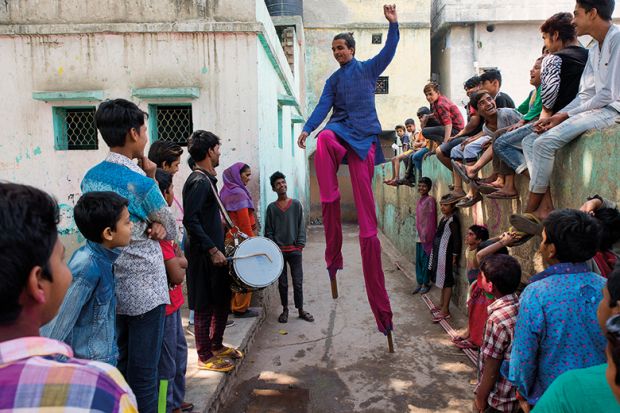Browse the full Asia University Rankings 2023 results
With 41.4 million students, 1.5 million teachers, 1,113 universities, 11,296 stand-alone institutions and 43,796 colleges, the Indian higher education system is considered to be the third largest in the world. The government has big ambitions for higher education, but several significant challenges must be overcome if they are to be achieved.
Three years ago, the country launched the National Education Policy (NEP) 2020, with the aim of overhauling the higher education system by creating a new set of administrative bodies for funding and regulation and redrafting the frameworks for accreditation and qualifications.
Big ambitions
The NEP aims to increase the gross enrolment rate from about 27 per cent to 50 per cent by 2035. More importantly, the aim is for 50 per cent of learners from schools to higher education to be exposed to vocational education by 2025.
To tackle the problem of unemployment and joblessness growth that India has been experiencing, the NEP emphasises vocational training and ensuring seamless mobility between general and vocational education streams, while also institutionalising flexible learning.
Students will be allowed to exit their undergraduate or postgraduate programmes and re-enter and complete them later at their convenience. To enable this flexibility, the credits earned from courses offered by different institutions are to be stored digitally in what is called the Academic Bank of Credit (ABC).
Institutions are also being bestowed with the freedom to evolve as independent, multidisciplinary institutions by 2030. In essence, the NEP is constructing a regulated market for higher education.
The other major aspect of the plan is to promote internationalisation so that Indian institutions can benefit from collaboration with foreign universities in teaching and research across the borders. The University Grants Commission (UGC) has mooted several initiatives in this regard, which include inviting foreign universities to establish campuses in India and to offer joint programmes. In a way, the national level higher education market is expected to integrate with the global market.
Challenges
The big question is whether this vision can overcome the challenges India faces. It is worth mentioning that higher education has been characterised as a quasi-public good in the NEP, which means that both public and private institutions have a role to play.
The budgetary allocation for the education sector as a whole should be raised to 6 per cent of gross domestic product, up from 4.3 per cent in 2019. However, this is unlikely to happen if the current trend of shrinking public funding is sustained.
As the sector becomes more and more competitive, there is an urgent need to raise public funding to create a level playing field to help publicly funded institutions keep pace with private rivals. The policy focus is, however, to nudge the publicly funded institutions to take out interest-free loans and invest to grow.
Increased funding will be welcomed, but it will not in itself revive the sector. The roots of Indian higher education’s problems are much deeper.
In the majority of the country’s institutions, educational processes are being subverted and are adversely affecting the delivery of excellent teaching and the conduct of quality research.
Elements of this subversion include unfair and corrupt practices, the veneer of compliance with regulatory provisions that disguises unethical behaviours and actions, and intellectual dishonesty, along with political interference in university affairs.
Although the NEP has pointed out a few of these practices – in particular the proliferation of fake journals – the reality on the ground presents an ominous picture, barring a few exceptions among the top-quality institutions.
The top-performing institutions have been given academic and financial autonomy. This includes freedom over the recruitment of faculty (albeit limited), the admission of students and the conduct of academic affairs, such as offering new courses.
However, exercise of this autonomy remains circumscribed in practice because of the decline in funding and because of the increasing dominance of bureaucrats interfering in academic matters and university administration.
The growth in the number of private universities has contributed to the rise in the student enrolment rate, but most private institutions are still substandard in quality.
Resorting to cost-cutting remains a viable option for many unscrupulous managers of privately funded institutions. Nevertheless, it is heartening to note that a few private universities are doing well; some have been accorded the status of “institutions of eminence” or “world-class universities” by the Ministry of Education, as have some publicly funded universities.
India has the potential to be a player in global higher education. Whether the NEP can achieve its aims and help the country get there remains to be seen.
Saumen Chattopadhyay is a professor at the Zakir Husain Centre for Educational Studies at Jawaharlal Nehru University in New Delhi. His research areas include the economics of education and public finance.
Register to continue
Why register?
- Registration is free and only takes a moment
- Once registered, you can read 3 articles a month
- Sign up for our newsletter
Subscribe
Or subscribe for unlimited access to:
- Unlimited access to news, views, insights & reviews
- Digital editions
- Digital access to THE’s university and college rankings analysis
Already registered or a current subscriber? Login







